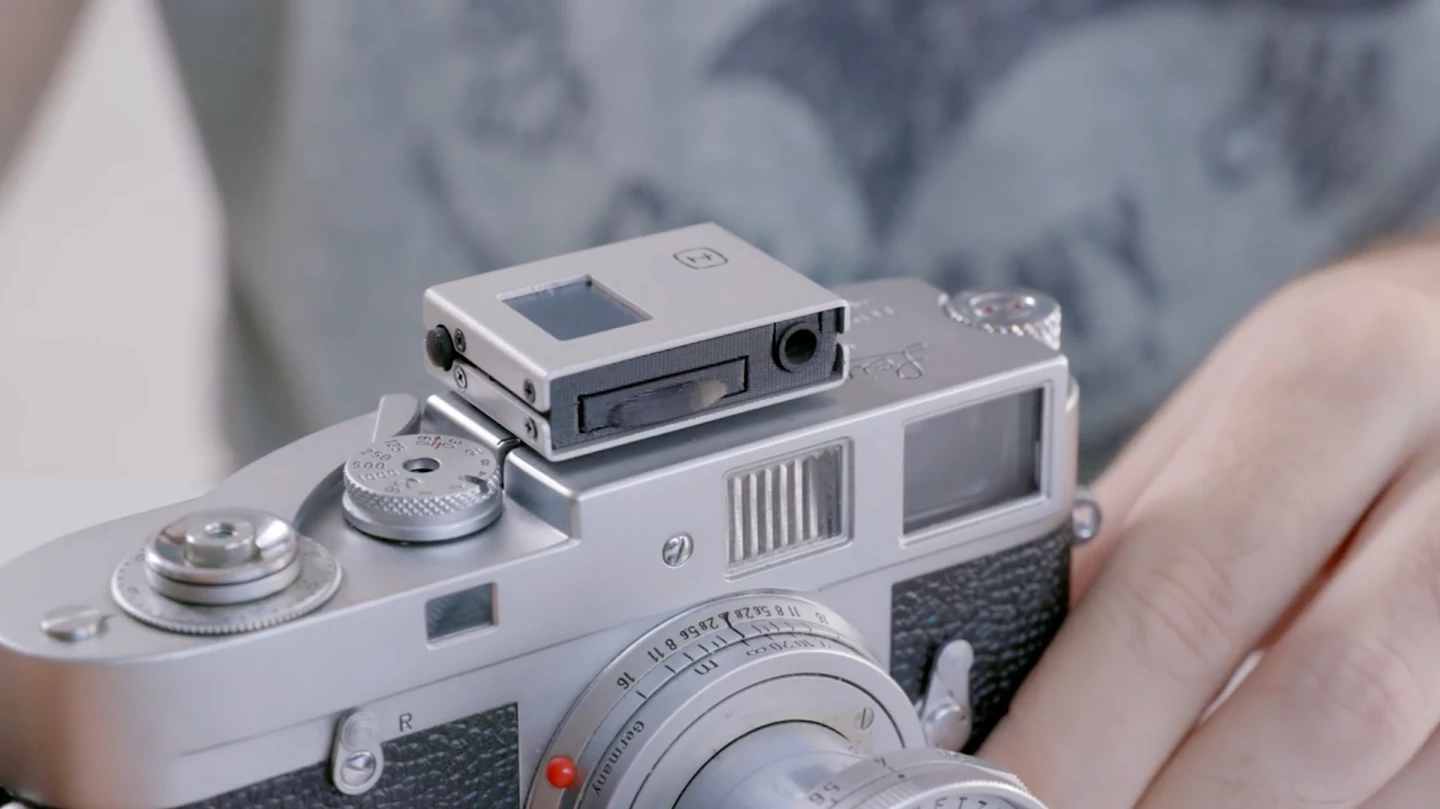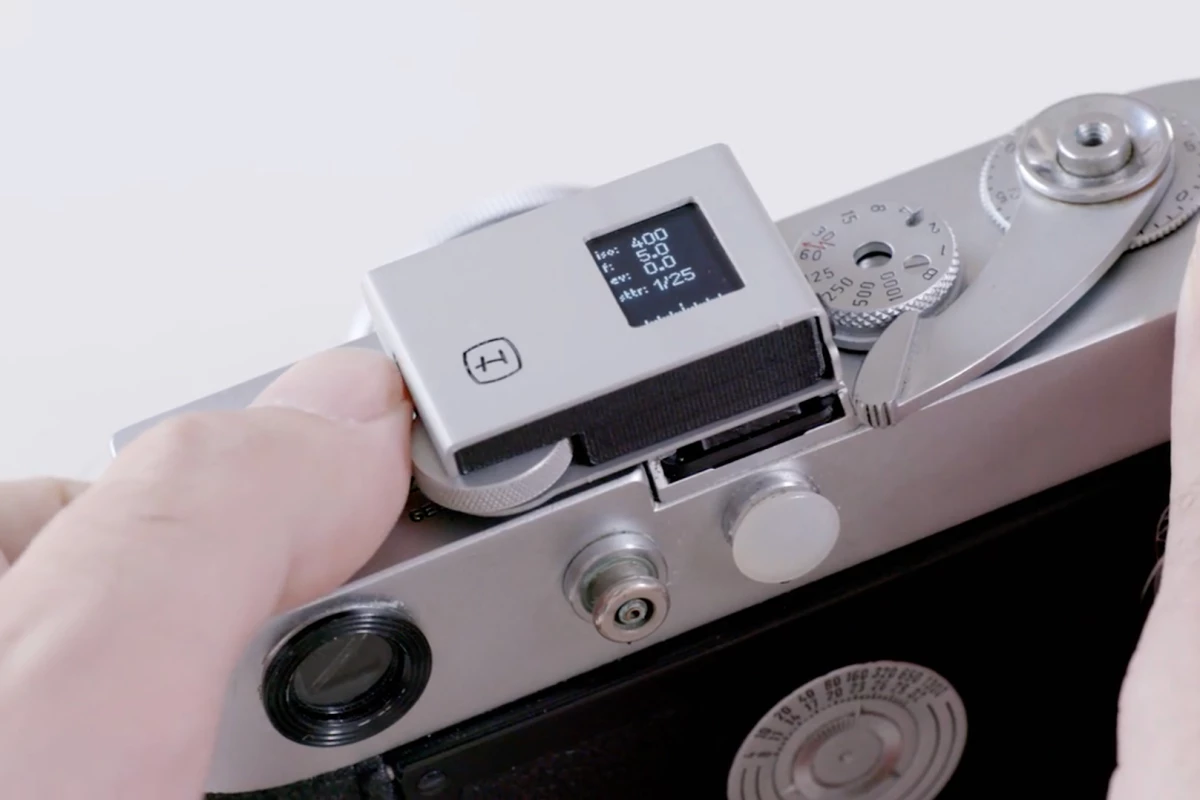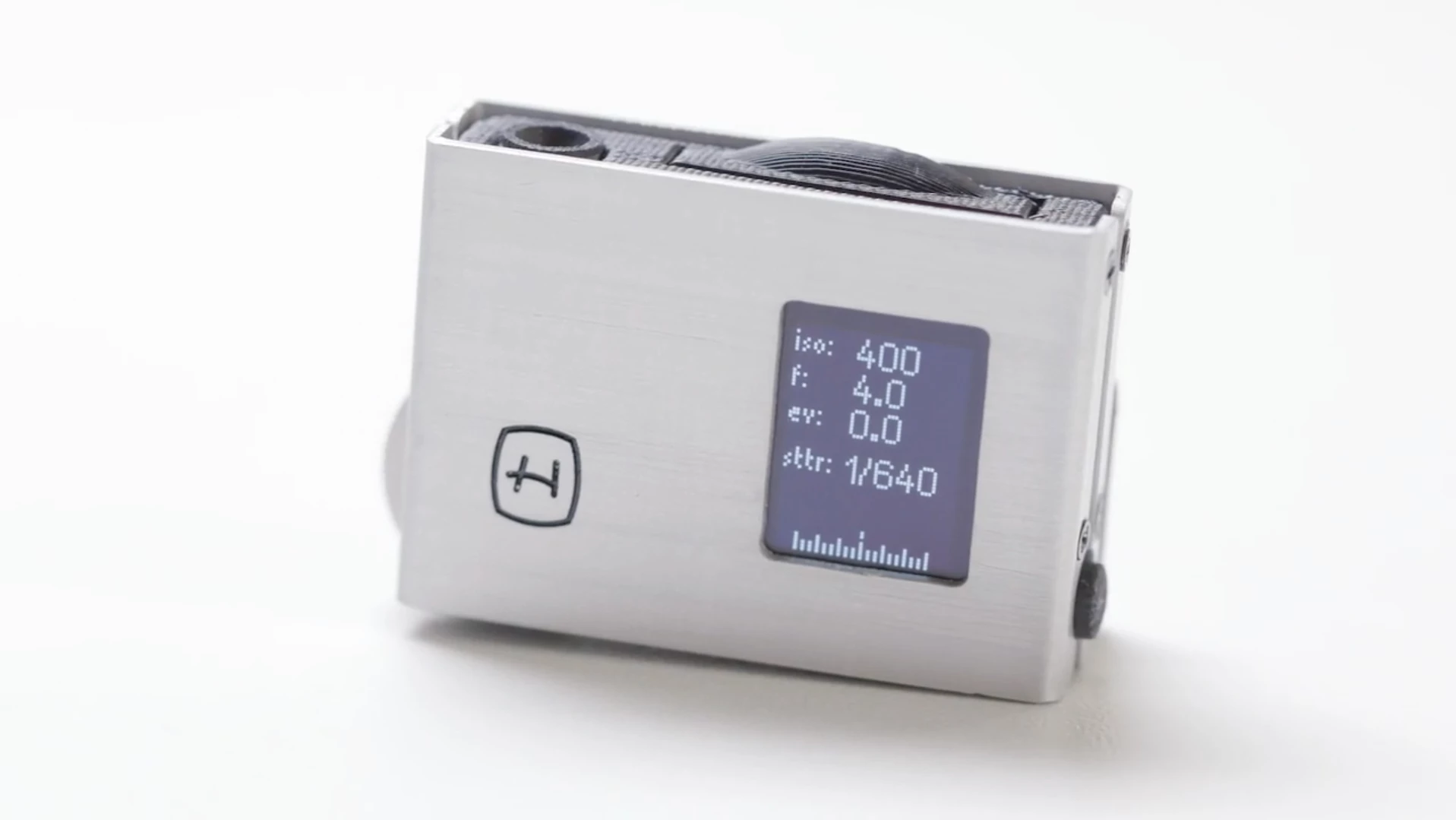Fully-manual analog film cameras can be fun and interesting to use, but it sucks when they don't have a built-in light meter. That's where the Hedeco Lime One comes in, as it's a digital light meter that can be added to such cameras.
Designed by German mechatronics engineer Johannes Heberlein, the Lime One has an anodized aluminum body, an OLED display, utilizes a widely available CR2032 battery, and slides into the camera's existing shoe mount on top. Adapters are available for trickier mounting situations.
Through a combination of pressing a button on its side and turning its knurled control wheel, users are subsequently able to select the ISO of the film they're using, plus they can switch between the device's four exposure modes.
These modes include Aperture Priority (where the Lime One calculates the correct shutter speed for the current f-stop), Shutter Priority (where it provides the right f-stop for the current shutter speed), Manual, and Exposure Value. Because the device isn't electronically linked to the camera, users still have to manually select the present f-stop or shutter speed (using the wheel), and they have to physically adjust the aperture ring or shutter speed dial to the suggested settings.

And since users can't see the Lime One's display as they're looking through the camera's viewfinder, they can temporarily lock in its readings simply by holding its button down.
Should you be interested, the device is currently the subject of a Kickstarter campaign. A pledge of €129 (about US$153) will get you one, when and if it reaches production.
You can see it in use, in the video below.
Sources: Kickstarter, Hedeco






